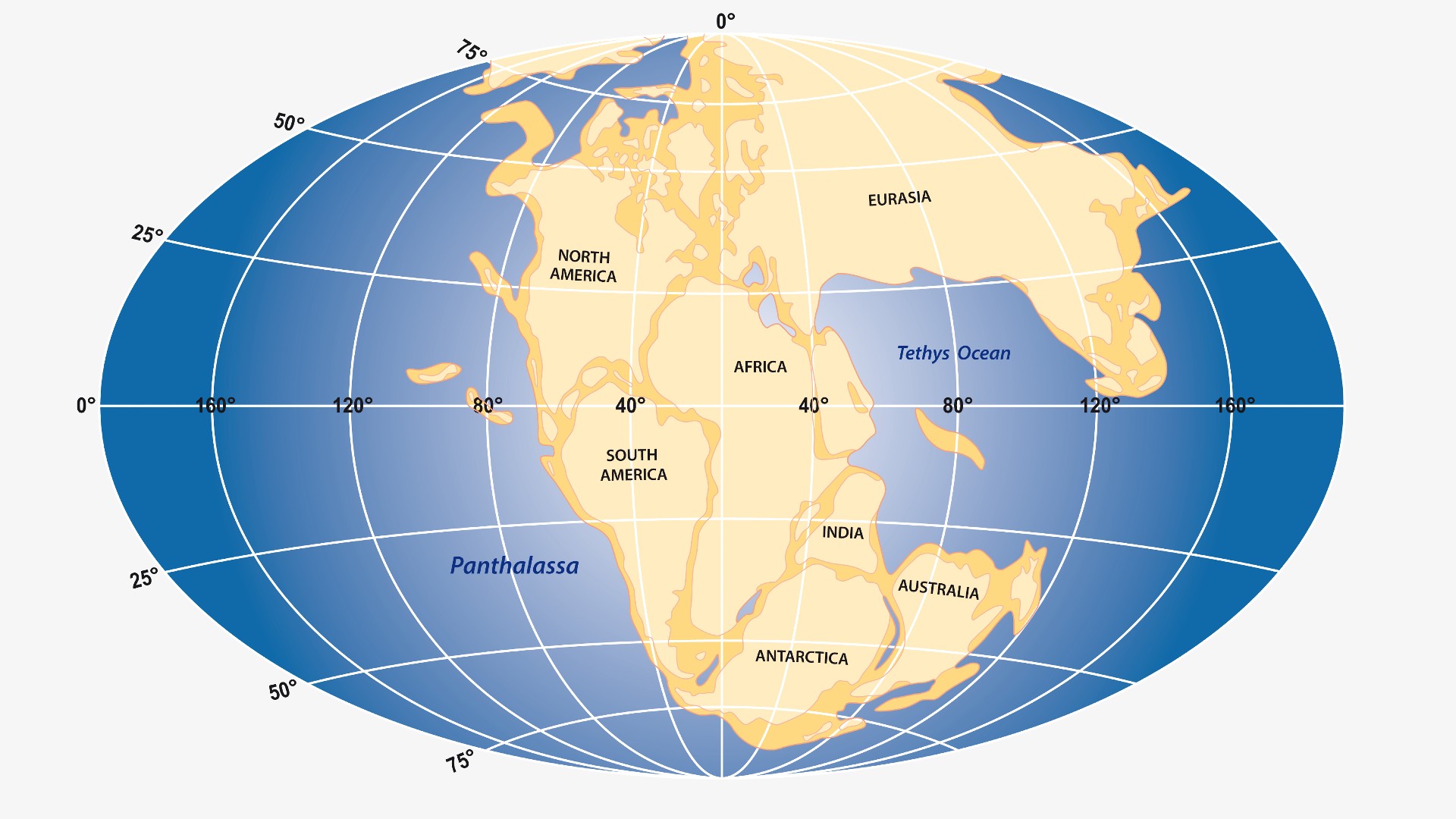What's the largest ocean that ever existed on Earth?
The Pacific Ocean represents the remnants of the biggest body of water in the planet's history.

Earth's current largest ocean, the Pacific, blankets more than 30% of the planet's surface, stretching 12,000 miles (19,000 kilometers) at its widest point, between Colombia and the Malay Peninsula, according to the Intergovernmental Oceanographic Commission of UNESCO (IOC UNESCO). But that titanic sea represents only the remnants of the largest ocean in Earth's history.
So what was the largest ocean ever to exist on our planet?
That would be Panthalassa, a world-spanning sea that surrounded the supercontinent Pangaea from about 300 million to 200 million years ago, Brendan Murphy, a geology professor at St. Francis Xavier University in Nova Scotia, told Live Science.
"The biggest ocean usually happens when supercontinents form, because if you only have one large supercontinent, then you've only got one ocean that exists around it," Murphy said.
Related: Will there ever be another Pangaea?
That has likely happened multiple times, Murphy said, but all those single world oceans would have been comparable in size. The most recent supercontinent was Pangaea, in which today's continents fit together, including the jigsaw-like pieces of Africa and South America. Another supercontinent, Rodinia, combined Earth's landmasses in a different configuration about 650 million years ago, according to the Smithsonian Institution; geologists debate whether another supercontinent arose in between, Murphy said.
Panthalassa would have stacked at least another 1,860 miles (3,000 kilometers) onto the Pacific's width, Murphy said. To put that into perspective, if you were traveling by jet plane across the equator, it would take 10 hours to cross the Pacific but 15 to span Panthalassa, he explained. Or think of it this way: At its widest point, the Pacific could fit more than five moon diameters; Panthalassa's additional width would accommodate nearly one more moon.
Get the world’s most fascinating discoveries delivered straight to your inbox.
By surface area, Panthalassa dwarfed the Pacific, covering approximately 70% of Earth's surface, according to a 2022 review in the journal Earth-Science Reviews, or nearly 140 million square miles (360 square km). The Pacific's 30% of the Earth's surface adds up to more than 63 million square miles (165 million square km), according to IOC UNESCO.
Visualizing Panthalassa as the Pacific padded with more than 1,800 extra miles captures the geological history, too: Pangaea broke up in large part due to the opening of the Atlantic Ocean, at the expense of Panthalassa. Its remnants became the Pacific, so you can picture Panthalassa as the Pacific pasted onto the Atlantic, which today ranges between about 1,800 miles, between Brazil and Liberia, and 3,000 miles (4,800 km), between North America and North Africa, according to IOC-UNESCO.
Technically, however, Earth likely had an even larger ocean at one point — but one not defined by continents. About 150 million years after Earth formed, it had oceans but no continents yet, so an unbroken sea covered the planet, according to the Smithsonian. That would mean the ocean spanned the nearly 24,901 miles (40,075 km) of Earth's equatorial circumference and the full 197 million square miles (510 million square km) of Earth's surface.
Even today, though, scientists consider Earth's oceans to be a single "world ocean," given that the waters interconnect at various points, according to the MarineBio Conservation Society. The Atlantic mingles with the Pacific at the bottom of South America, for example, and contacts the Indian Ocean beneath Africa, Murphy said.
Nevertheless, as defined by continents, the Pacific has held the title of the world's largest ocean since Pangaea's demise around 200 million years ago. But if current projections of tectonic plate movements hold true, Australia will split the Pacific in two over the next 70 million years, Murphy said. At the same time, the Atlantic will widen, taking the crown of Earth's largest ocean.
Originally published on Live Science.

Michael Dhar is a science editor and writer based in Chicago. He has an MS in bioinformatics from NYU Tandon School of Engineering, an MA in English literature from Columbia University and a BA in English from the University of Iowa. He has written about health and science for Live Science, Scientific American, Space.com, The Fix, Earth.com and others and has edited for the American Medical Association and other organizations.




